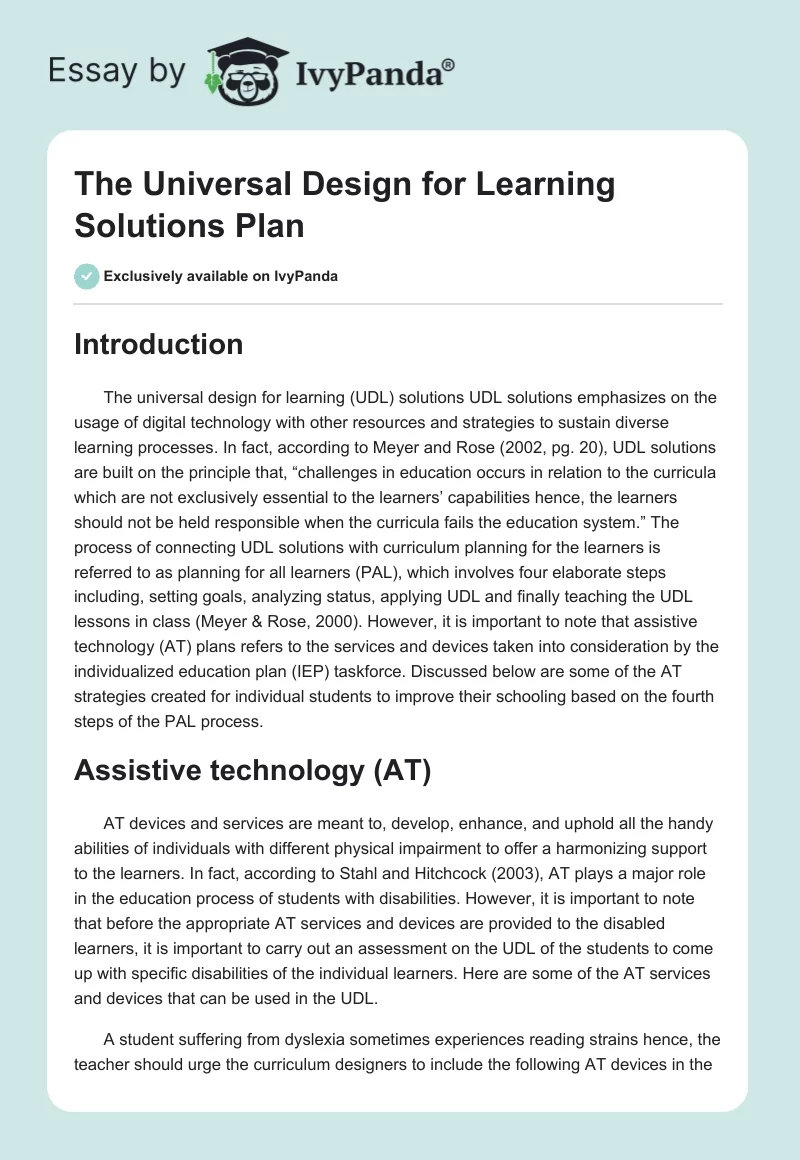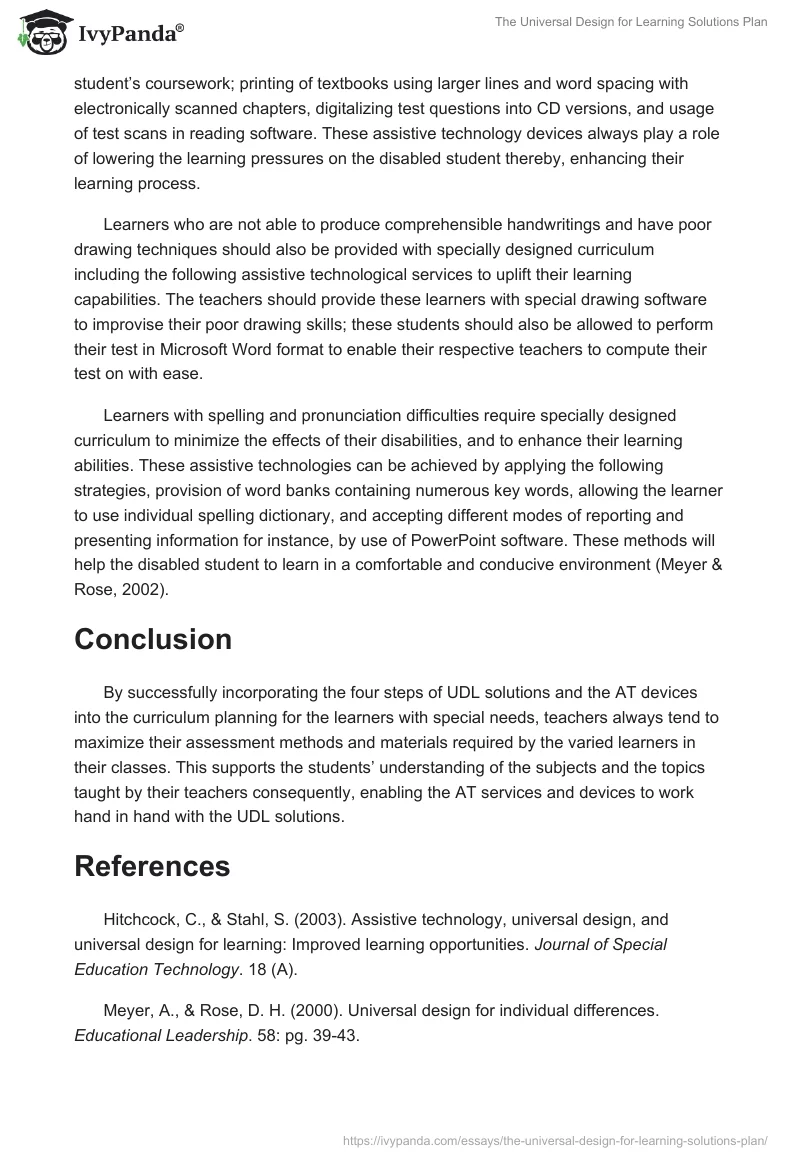Introduction
The universal design for learning (UDL) solutions UDL solutions emphasizes on the usage of digital technology with other resources and strategies to sustain diverse learning processes. In fact, according to Meyer and Rose (2002, pg. 20), UDL solutions are built on the principle that, “challenges in education occurs in relation to the curricula which are not exclusively essential to the learners’ capabilities hence, the learners should not be held responsible when the curricula fails the education system.” The process of connecting UDL solutions with curriculum planning for the learners is referred to as planning for all learners (PAL), which involves four elaborate steps including, setting goals, analyzing status, applying UDL and finally teaching the UDL lessons in class (Meyer & Rose, 2000). However, it is important to note that assistive technology (AT) plans refers to the services and devices taken into consideration by the individualized education plan (IEP) taskforce. Discussed below are some of the AT strategies created for individual students to improve their schooling based on the fourth steps of the PAL process.
Assistive technology (AT)
AT devices and services are meant to, develop, enhance, and uphold all the handy abilities of individuals with different physical impairment to offer a harmonizing support to the learners. In fact, according to Stahl and Hitchcock (2003), AT plays a major role in the education process of students with disabilities. However, it is important to note that before the appropriate AT services and devices are provided to the disabled learners, it is important to carry out an assessment on the UDL of the students to come up with specific disabilities of the individual learners. Here are some of the AT services and devices that can be used in the UDL.
A student suffering from dyslexia sometimes experiences reading strains hence, the teacher should urge the curriculum designers to include the following AT devices in the student’s coursework; printing of textbooks using larger lines and word spacing with electronically scanned chapters, digitalizing test questions into CD versions, and usage of test scans in reading software. These assistive technology devices always play a role of lowering the learning pressures on the disabled student thereby, enhancing their learning process.
Learners who are not able to produce comprehensible handwritings and have poor drawing techniques should also be provided with specially designed curriculum including the following assistive technological services to uplift their learning capabilities. The teachers should provide these learners with special drawing software to improvise their poor drawing skills; these students should also be allowed to perform their test in Microsoft Word format to enable their respective teachers to compute their test on with ease.
Learners with spelling and pronunciation difficulties require specially designed curriculum to minimize the effects of their disabilities, and to enhance their learning abilities. These assistive technologies can be achieved by applying the following strategies, provision of word banks containing numerous key words, allowing the learner to use individual spelling dictionary, and accepting different modes of reporting and presenting information for instance, by use of PowerPoint software. These methods will help the disabled student to learn in a comfortable and conducive environment (Meyer & Rose, 2002).
Conclusion
By successfully incorporating the four steps of UDL solutions and the AT devices into the curriculum planning for the learners with special needs, teachers always tend to maximize their assessment methods and materials required by the varied learners in their classes. This supports the students’ understanding of the subjects and the topics taught by their teachers consequently, enabling the AT services and devices to work hand in hand with the UDL solutions.
References
Hitchcock, C., & Stahl, S. (2003). Assistive technology, universal design, and universal design for learning: Improved learning opportunities. Journal of Special Education Technology. 18 (A).
Meyer, A., & Rose, D. H. (2000). Universal design for individual differences. Educational Leadership. 58: pg. 39-43.
Meyer, A., & Rose, D. H. (2002). Teaching every student in the digital age: Universal design for learning. Alexandria, VA: Association for Supervision and Curriculum Development.


